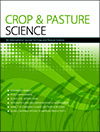CP21017Zeolite alleviates potassium deficiency and improves lodging-related stem morphological characteristics and grain yield in rice
 , Taotao Chen
, Taotao Chen  , Kadambot H. M. Siddique
, Kadambot H. M. Siddique  and Daocai Chi
and Daocai Chi
Potassium (K) deficiency causes lodging problems and yield reductions in paddy fields in China. Zeolite is an inexpensive, K-rich silicate mineral with abundant reserves worldwide that could increase K supply to plants. This study proved that zeolite increases K fertiliser availability, relieves soil K deficiency, and enhances lodging-related stem morphology characteristics, reducing rice stem lodging.




